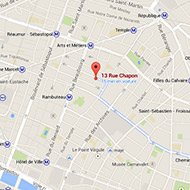The face is exposed, threatened, as if inviting us to an act of violence.[1]
The face of a woman in front of me.
The gaze is getting lost in the cavity of a forehead, her teeth seem to glow next to her face; her neck becomes chaos of forms under a confused sun of metamorphoses. I haven't forgotten what the mouse's click does to her. Neither the speed of the catastrophes that destroyed her, nor my hand adjusting the distance that separates her from the frame, nor the black dot on the horizon of her nose that grows to the ears. A liquid, whitish mist stagnates inside, on either side of a wall that stands in the scalp. No living being could have such a face. From the whole upper half emerges a weft of flesh or the winding of a hair, who knows?
In this world inhabited by bodies in mutation, every gesture is comparable to an avalanche that I declare to be a jaw or a passing frozen smile in the bowels of lips. But I'm not sure. Because at some distance from this smile, a deep gash opens on an edgy eye.
No matter I repeat myself that nothing equals the original beauty of the face, it’s fascinating photogenic, everything becomes pasty and the imprecise structure of the skeleton still struggles with chaos.
It is this chaos that the face makes visible, it is this tense chaos, contained, surrounded by the face, that I would like to show, see, as if inadvertently.
I like to think that the work is returned to itself, devoid of any allegiance to any verifiable pattern on which all the figures of disorder have excelled at shining : the taste of an unmeasured destruction in the splendor of an accident after the fact. I hope that this exercise of admiration in hollowness will be able to beat the tepid and dull figures of a world where each personal sign would have its counterpart inside a cinema image. The sight suffrage of these ladies conferring on me a wild desire for human sacrifice, it does not come to my mind to cover with a cloth of flesh the skeleton of a face whereas I have at my disposal the hand of brigands and the enchanted eye which will give blows in the system of the image until it yields a little ground.
The system knows what it does, it knows that it does not give anything without a strong demand where the blows follow more and more quickly, plunging the player into a second state.
The "work" finished (to consider that getting the imponderable is a job), I turn off in an instant, not seen not caught, like the headlights of a car. I have nothing to fear, nothing to foresee that could lessen the fatality of my gesture. My immunity as a thief protects me. The character - visually, the actress - must become other, he must ignore himself, abdicate.
Every day, I stand before the imminence of its decline with this dark compass: an eye and a finger sharpened by the knife of desire, broken with the strain of the index finger, fixed on the midpoint of a wheel that turns in the silence of the computer, like a casino roulette. The illusion renewed each day of this carrousel destroys all my patient hopes of success. As I play my game, it turns into an increasingly abstruse dream. I read this dream - where masks generate masks - as one enters a book, fixed in anticipation of an outcome. The outcome is revealed when the tension is released in extremis between the formal consciousness of a resemblance and what pushes it into its entrenchments, gnawing away at it with small nourished fires.
Finally, grace, torn away from the repetition of the gesture, can dispose of the work.
Because, in the end, it is to participate in grace, to see it fleetingly, that we give ourselves and that we play.
[1] Emmanuel Levinas, Ethics and Infinity, interview with Philippe Nemo, Paris, Fayard, 1982, p. 80.


